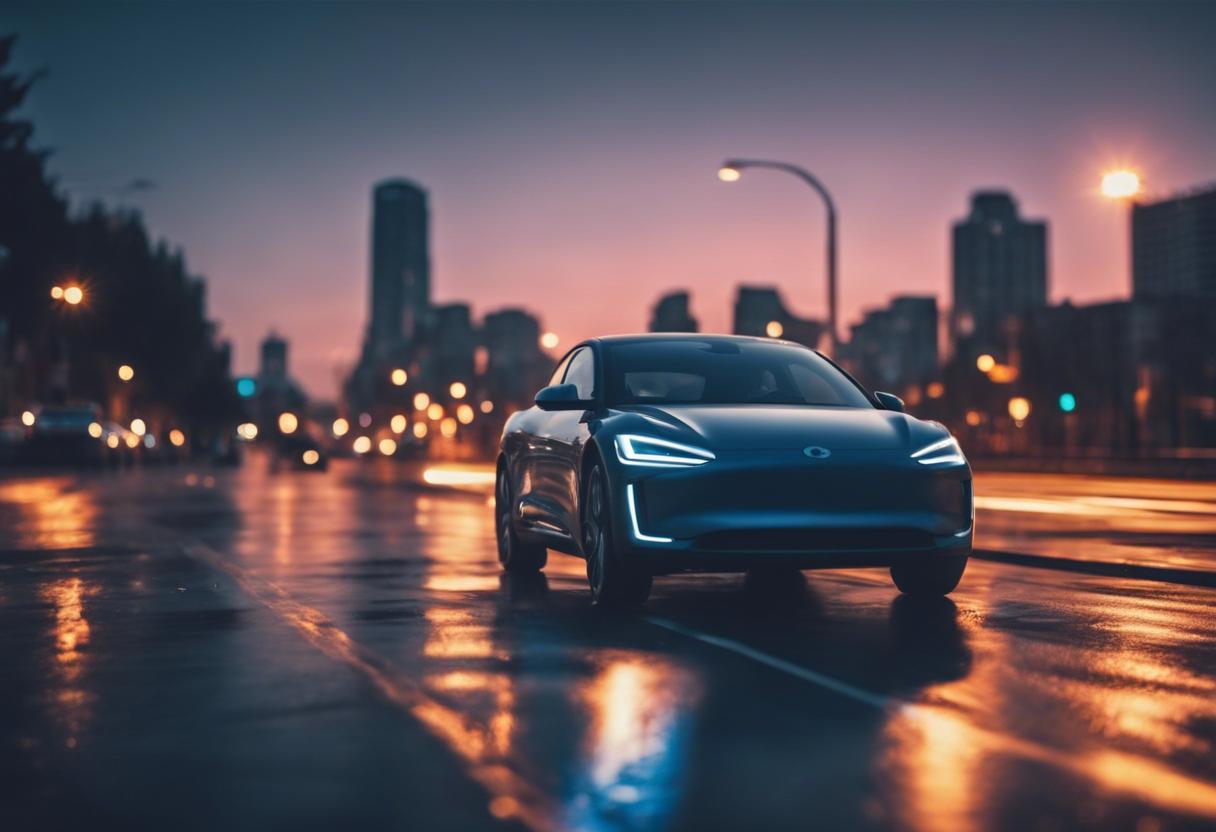Tesla experienced an 8% dip in share prices on Friday, resulting in almost €36.5 billion ($40 billion) being wiped off the auto company’s market worth. This came as a result of Elon Musk’s Robotaxi launch event which did not satisfy investors due to the lack of specifics regarding the anticipated fleet of self-driving “Cybercabs.” This drop in stock marked Tesla as the poorest performer on the S&P 500. Nevertheless, the company still holds the title for the most valuable auto firm globally with a market cap of $687bn.
The world’s wealthiest man, Mr Musk, announced an ambitious new two-seater vehicle – devoid of a driving wheel or pedals. This could potentially be out on the market for under $30,000 and see production by the end of 2026, given that it attains regulatory approval. Musk, however, failed to elaborate on the technology that will be used for these robotaxis or how he plans to reduce the cost of these autonomous vehicles.
Analysts such as Toni Sacconaghi from Bernstein criticised the Robotaxi event stating it was, “underwhelming and remarkably lacking in detail.” He further added that there was no new information regarding “new products, offerings, and time frames”, with product launches essentially in line with expectations.
At Tesla’s high-profile ‘We, Robot’ event hosted at the Warner Bros Studios in LA on Thursday, Musk also disclosed a prototype for a 20-occupant ‘Robovan’. He forecasted that these AI-powered Optimus humanoid robot “buddies” would turn out to be the “most significant product of any kind” and retail for less than $30,000. However, more emphasis was directed towards design, branding, and Musk’s unique futuristic vision rather than the technological advancements required to enable these developments.
After repeated delays, Musk’s presentation began almost an hour late and was wrapped up within half an hour. It included a demonstration of Optimus robots serving beers to investors while dancing inside glass structures.
Despite their greater dynamism compared to earlier models, Morgan Stanley analysts noted that the robots were not completely autonomous but instead relied on human interference. They clarified that the robots’ operation was more a showcase of versatility and mobility degrees. Jefferies analyst, John Colantuoni, referred to the occasion as ineffective and forecasted that competitors like Uber – who recently entered a partnership with Google’s autonomous car division, Waymo, would turn this situation in their favour.
He commented that Tesla failed to offer verifiable progress indicators for the necessary technology, which complicates the evaluation of the viability of the objectives set at the event. The news of advancements in this field led the share price of Uber to increase by 9%, while its alternative ride-hailing app, Lyft, saw a 10% rise.
Elon Musk, the head of Tesla, has made declarations that the company’s shift towards self-driving and AI technology could potentially elevate its market value to $5tn; this equates to seven times its current valuation. The news of their ‘robotaxi day’ on 5th April had already resulted in a 45% increase in the value of the company’s shares.
However, Musk has repeatedly failed to meet his objectives relating to introducing autonomous taxis, initially promising a fully automated service covering routes from Los Angeles to New York by the end of 2017. In 2019, he stated that a million robotaxis would be operating by the following year.
Further disappointment for investors was the delay in introducing a more reasonably priced electric vehicle, unofficially named the Model 2, costing $25,000. This was to refresh its outdated product range. – © 2024 The Financial Times Limited

